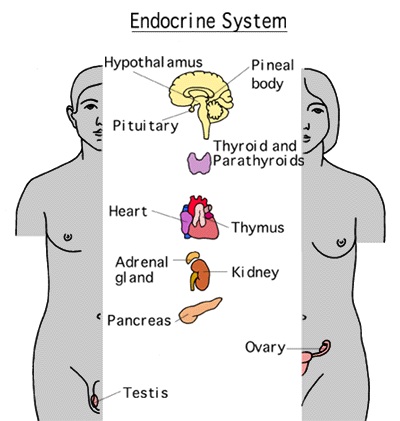
ENDOCRINE SYSTEM
6.0. INTRODUCTION
The internal environment of all living organisms are maintained within specific limits. This situation is maintained by the interaction of the endocrine system and other organs of the body such as the nervous system, the sensory system, the muscular system etc. ( this process has been discussed nder homeostasis)
6.1. WHAT IS ENDOCRINE SYSTEM?
The endocrine system is a set of organs that secretes their secretions known as HORMONES directly into the blood. They are called ductless glands. This is different from EXOCRINE GLANDS which scretes their secretions via tubes or ducts.
HORMONES
A hormone is a chemical messenger produced by the endocrine glands. These glands are ductless, which means that their secretions (hormones) are released directly into the bloodstream and travel elsewhere in the body to target organs, upon which they act.
HORMONE ACTION
General Characteristics
- Needed in very small amounts (potent).
- Produce long-lasting effects in the cells they target.
- Regulate metabolic processes (maintain homeostasis).
- Are regulated by negative-feedback mechanisms.
CONTROL OF HORMONAL SECRETIONS
Control Sources
- Generally one or any combination of 3 types of control.
- Hormonal control by tropic hormones of hypothalamus.
- Nervous control by Autonomic nervous system.
- Humoral control by regulating blood levels
GLANDS OF THE ENDOCRINE SYSTEM
a. Pineal gland
b. Thymus gland
c. Testes
d. Ovaries

| USEFUL LINKS |
|